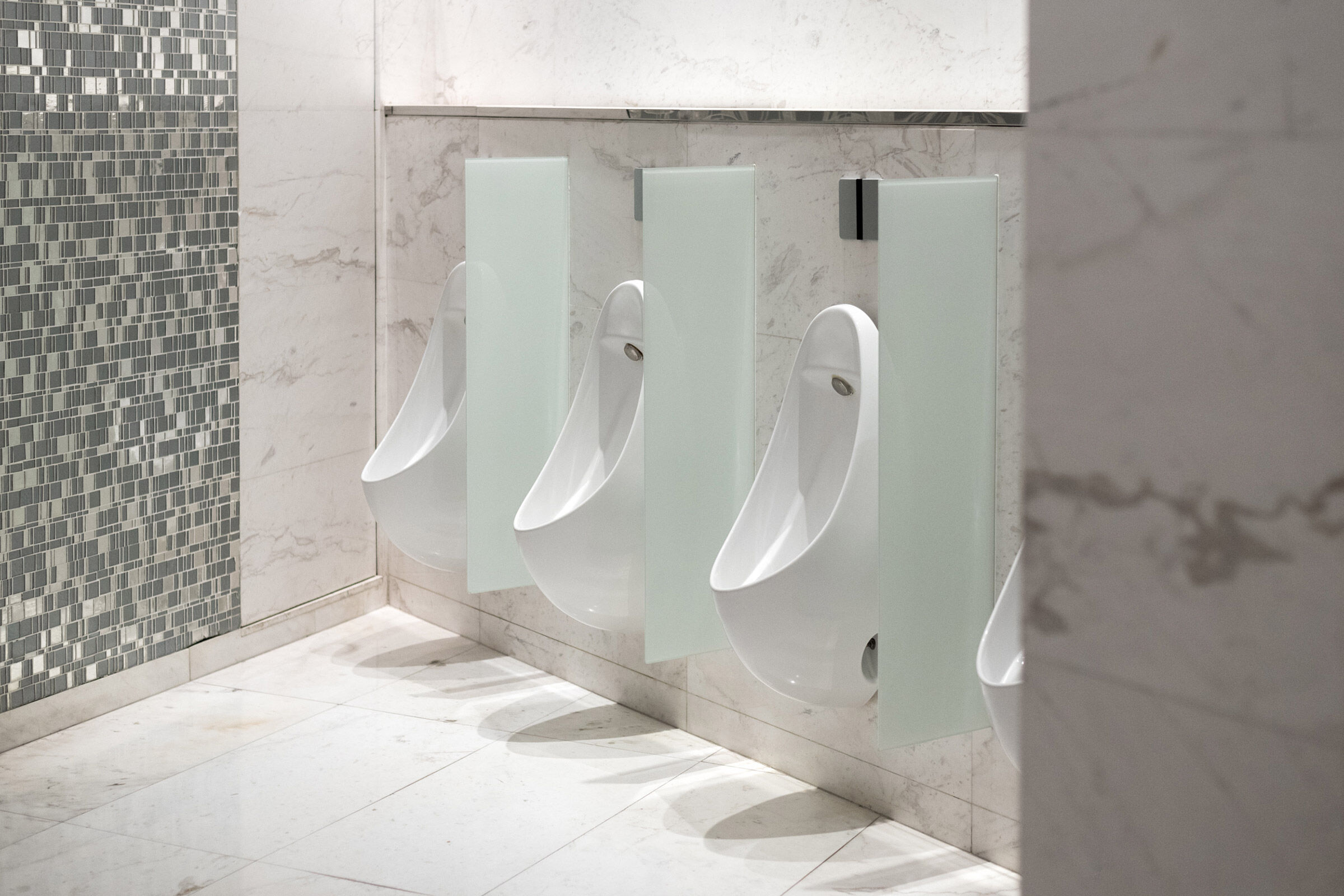
THE PRODUCT:
Urinals are most commonly found in commercial and institutional restrooms.
THE STANDARD:
The current national standards for urinals took effect in 1994 and set a maximum water use of 1.0 gallons per flush (gpf). In December 2010, DOE officially waived federal preemption of the national urinal standard. This waiver of federal preemption allows states to set standards provided they are more stringent than the national standard.
In 2014, Colorado set standards for flushing urinals that set a maximum water use of 0.5 gpf. In 2015, California set standards at 0.125 gpf for wall-mounted urinals. As of 2024, 13 states had adopted standards for urinals that are more stringent than the national standard.
KEY FACTS:
EPA's voluntary WaterSense program (which is similar to ENERGY STAR but focused on helping consumers identify water-efficient products) has set criteria for flushing urinals at no more than 0.5 gpf. Replacing a 1.0 gpf flushing urinal with a WaterSense labeled flushing urinal can save over 2,300 gallons of water per year (assuming that the average urinal is flushed approximately 18 times per day and is in use 260 days per year).
Timeline
| Federal | Date | States |
| 2024 | MD Standard Effective | |
| 2023 | ME Standard Effective | |
| 2023 | RI Standard Effective | |
| 2022 | MD Standard Adopted | |
| 2022 | DC Standard Effective | |
| 2022 | NY Standard Effective | |
| 2022 | MA Standard Effective | |
| 2022 | NJ Standard Effective | |
| 2021 | ME Standard Adopted | |
| 2021 | RI Standard Adopted | |
| 2021 | MA Standard Adopted | |
| 2021 | NJ Standard Adopted | |
| 2021 | WA Standard Effective | |
| 2020 | DC Standard Adopted | |
| 2020 | VT Standard Effective | |
| 2020 | NV Standard Effective | |
| 2019 | NY Standard Adopted | |
| 2019 | NV Standard Adopted | |
| 2019 | WA Standard Adopted | |
| 2018 | VT Standard Adopted | |
| 2016 | CO Standard Effective | |
| 2016 | CA Standard Effective | |
| 2015 | CA Standard Adopted | |
| 2014 | CO Standard Adopted | |
| 2014 | CA Standard Effective | |
| 2014 | TX Standard Effective | |
| 2009 | TX Standard Adopted | |
| 2007 | CA Standard Adopted | |
| 1st Federal Standard Effective | 1994 | |
| 1st Federal Standard Adopted | 1992 | |
| EPACT Initial Federal Legislation Enacted | 1992 |